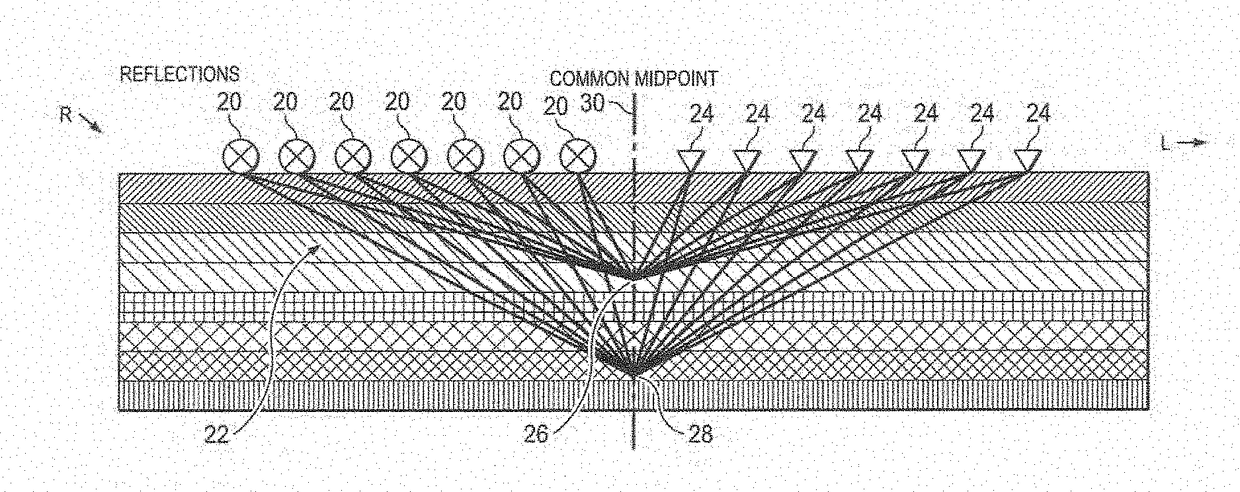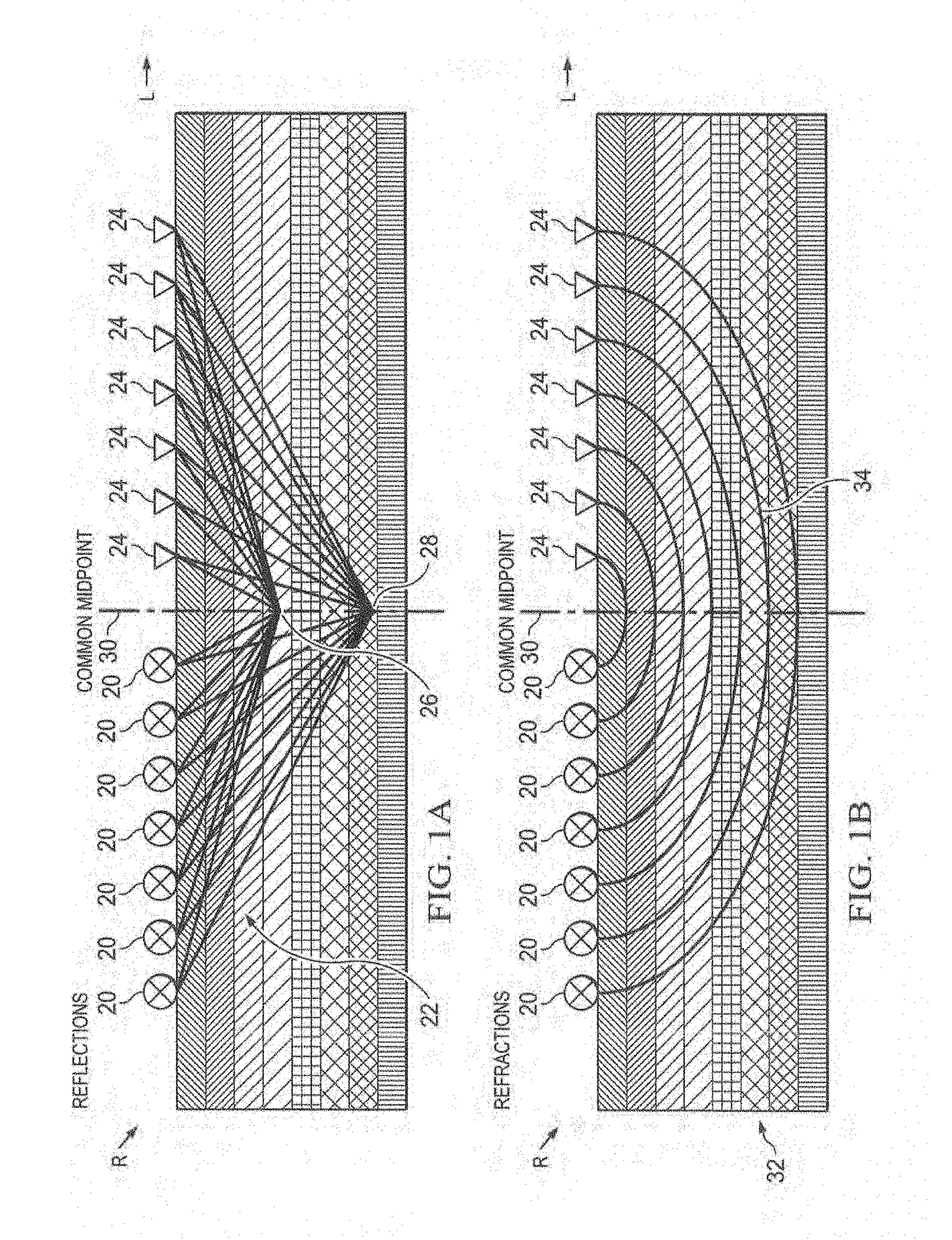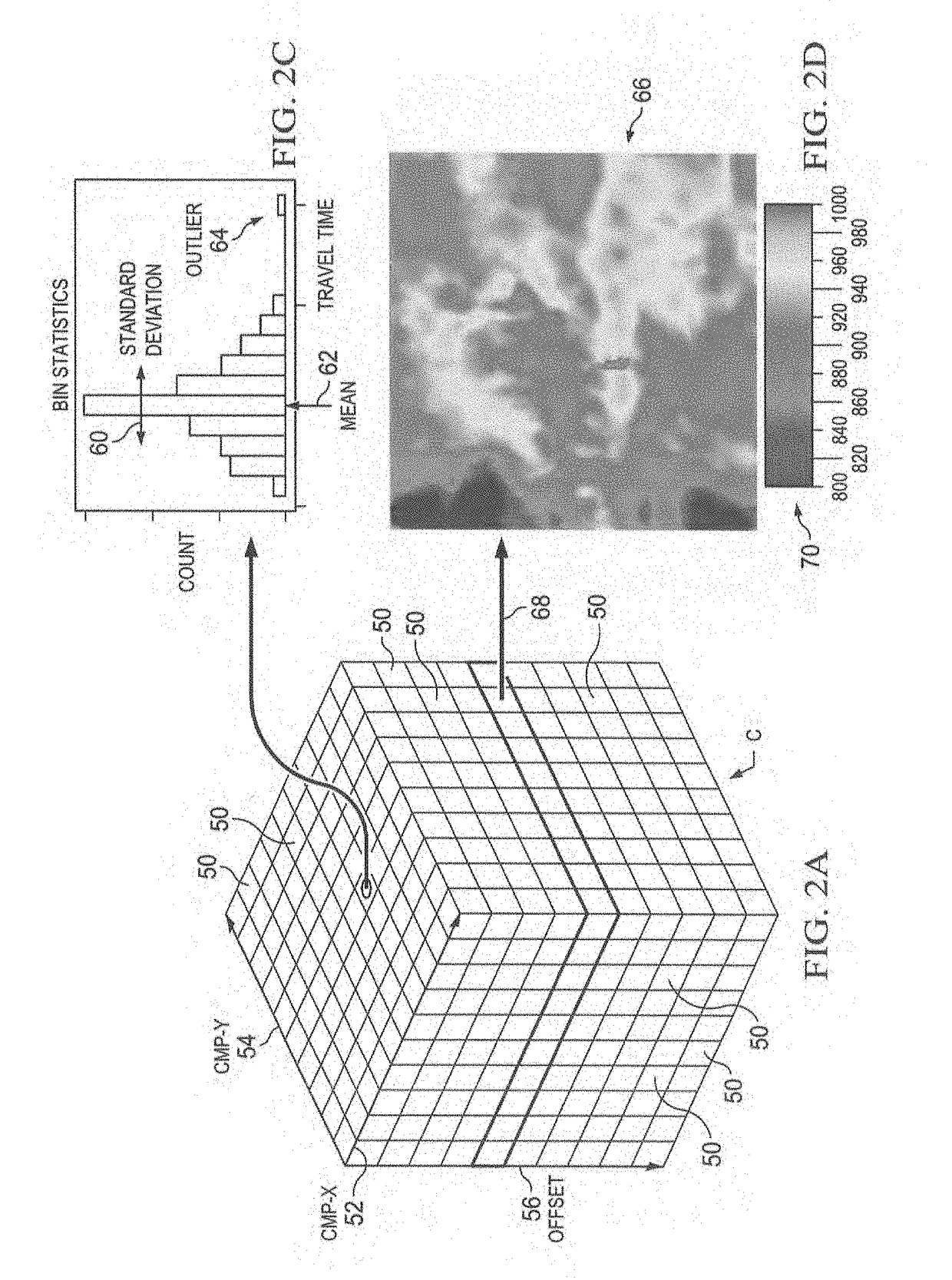Automated near surface analysis by surface-consistent refraction methods
a refraction analysis and automatic technology, applied in the field of geophysical exploration, can solve the problems of difficult to cope with the increased size of seismic datasets, unsuitable conventional seismic data processing and analysis methods that were developed some several years ago, and the inability to analyze the near surface in search of subtle anomalies
- Summary
- Abstract
- Description
- Claims
- Application Information
AI Technical Summary
Benefits of technology
Problems solved by technology
Method used
Image
Examples
Embodiment Construction
[0035]In the drawings, FIG. 1A illustrates schematically a plot of seismic wave travel resulting from the performance of a two-dimensional reflection seismic survey along a seismic line of profile along a longitudinal direction or line of profile L over a region R of the earth. The present invention is equally applicable to three-dimensional surveys or to two intersecting rectangular lines of profile, as well.
[0036]As indicated schematically in FIG. 1A, seismic energy is imparted at a number of elastic wave sources or shot points 20 along the line of profile L for travel along travel paths 22 through a succession of subsurface formation layers for receipt at a number of detector geophones 24 along the line of profile. The detector geophones 24 serve as sensors or receivers of the seismic energy imparted by the sources 20.
[0037]Seismic energy from the sources travels as waves as indicated at 22 downwardly from the sources 20 through a number of subsurface layers at increasing depths ...
PUM
 Login to View More
Login to View More Abstract
Description
Claims
Application Information
 Login to View More
Login to View More - R&D
- Intellectual Property
- Life Sciences
- Materials
- Tech Scout
- Unparalleled Data Quality
- Higher Quality Content
- 60% Fewer Hallucinations
Browse by: Latest US Patents, China's latest patents, Technical Efficacy Thesaurus, Application Domain, Technology Topic, Popular Technical Reports.
© 2025 PatSnap. All rights reserved.Legal|Privacy policy|Modern Slavery Act Transparency Statement|Sitemap|About US| Contact US: help@patsnap.com



